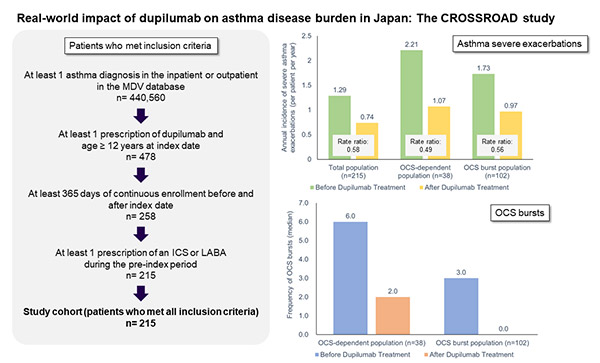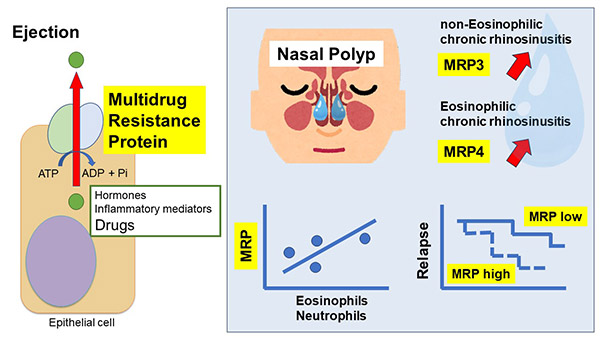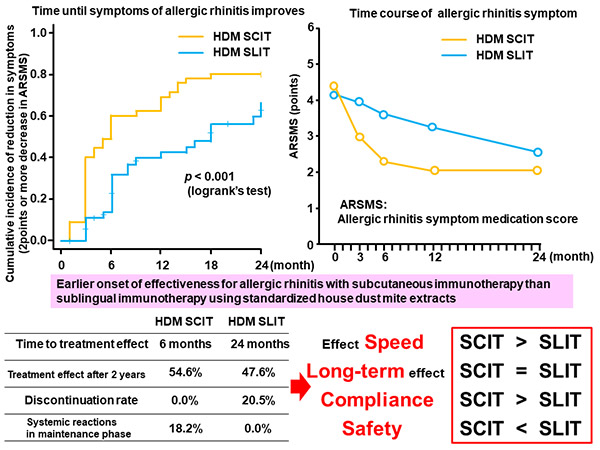Volume 72, Issue 4 (October 2023)
Editor's Choices
Editor’s comment: Dupilumab, an anti-IL-4RA antibody, is approved for severe/refractory asthma inadequately controlled by existing therapies. Using an insurance claims data base, Fukunaga et al. investigated the real-world effects of dupilumab on asthma exacerbation risk and oral corticosteroid (OCS) use in Japanese individuals with asthma. They found that dupilumab reduced the annual incidence of severe asthma exacerbations by 43%. They also found that the mean OCS dosage decreased from 10.4 to 7.2 mg/day in chronic OCS users and that unscheduled outpatient visits and hospitalizations decreased.
Editor’s comment: Chronic rhinosinusitis is classified into two major endotypes: neutrophilic and eosinophilic. Some patients with chronic rhinosinusitis are refractory to treatment. Iinuma et al. performed transcriptomic and proteomic analyses simultaneously for nasal polyp samples of non-eosinophilic chronic rhinosinusitis (nECRS) and eosinophilic chronic rhinosinusitis (ECRS). They found that the expression of multidrug resistance proteins 3 (MRP3) and MRP4 significantly increased in nECRS and ECRS, respectively. They also found that MRP3 and MRP4 expressions were positively correlated with the number of neutrophil and eosinophil infiltrates in polyps and were associated with the tendency to relapse in patients with ECRS, suggesting their involvement in treatment resistance.
Editor’s comment: Allergen immunotherapy (AIT) effectively treats allergic diseases, including allergic rhinitis. Subcutaneous immunotherapy (SCIT) and sublingual immunotherapy (SLIT) are available in Japan for AIT using standardized house dust mite (HDM) extract. Hamada et al. compared the effectiveness and safety of SCIT and SLIT with standardized HDM extract for pediatric patients with allergic rhinitis. They found that the HDM SCIT group showed significantly earlier efficacy than the HDM SLIT group. Regarding adverse effects, the incidence of systemic reactions was not significantly different between the two groups in the dose escalation phase but was higher in the HDM SCIT group than in the HDM SLIT group in the maintenance phase. The discontinuation rate was higher in the HDM SLIT group.





